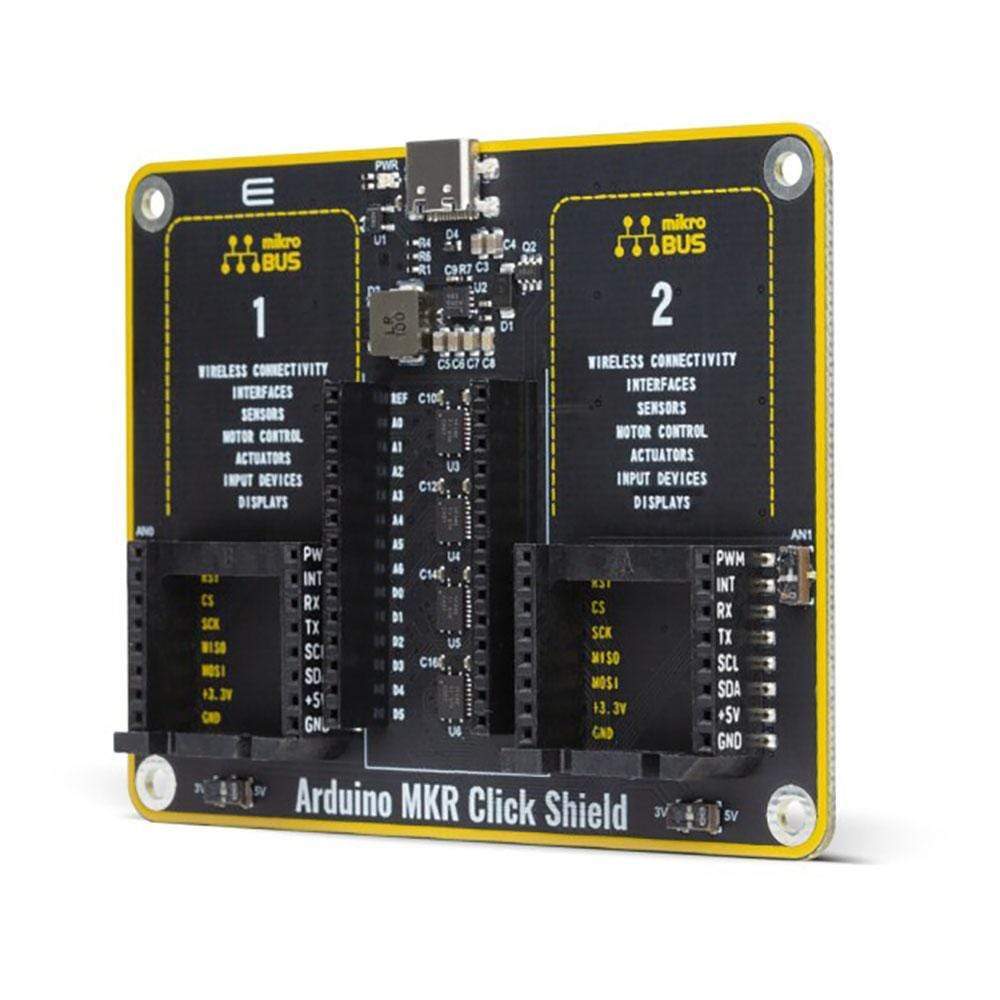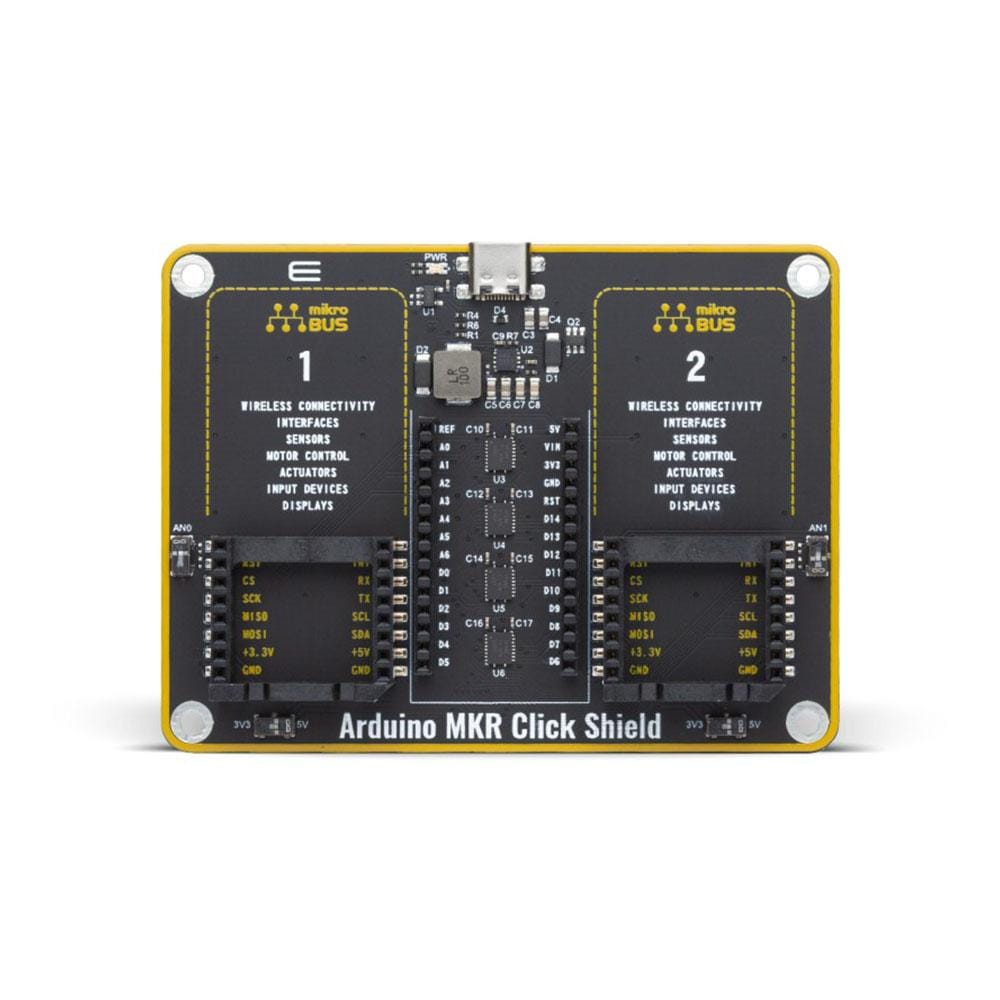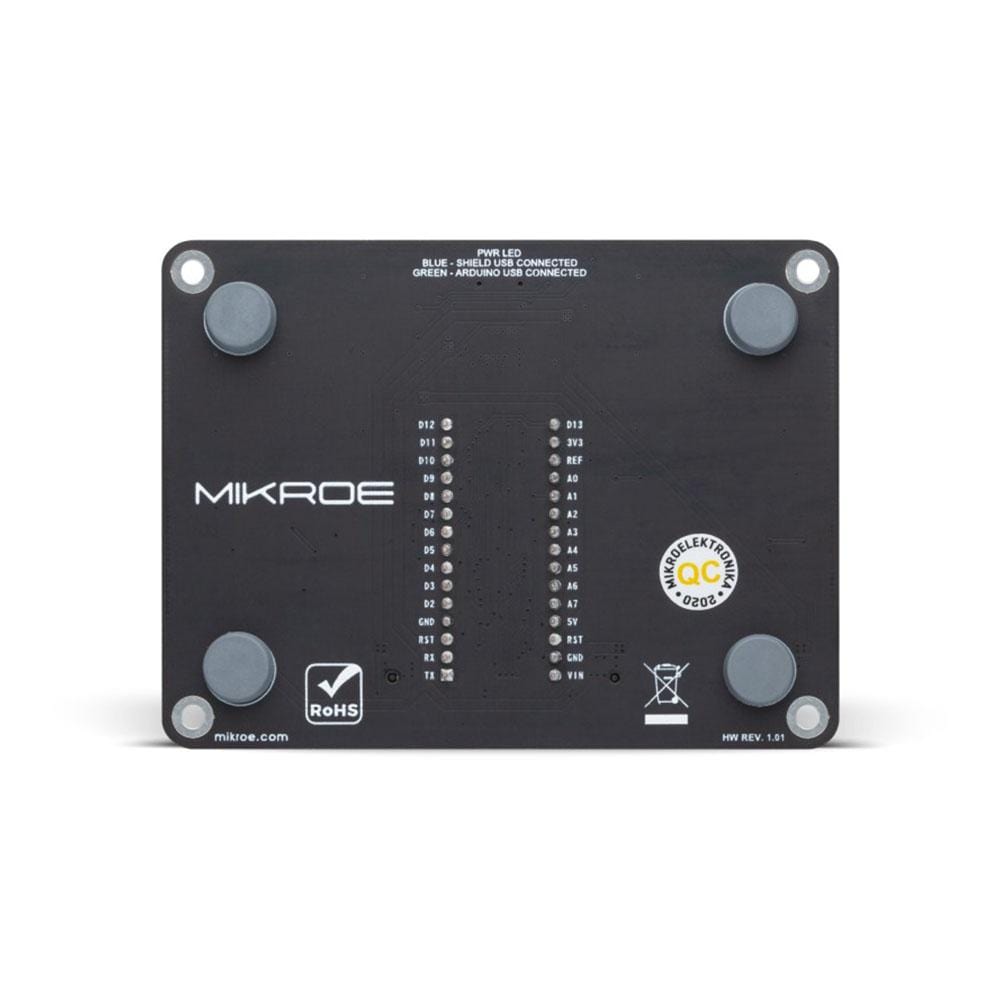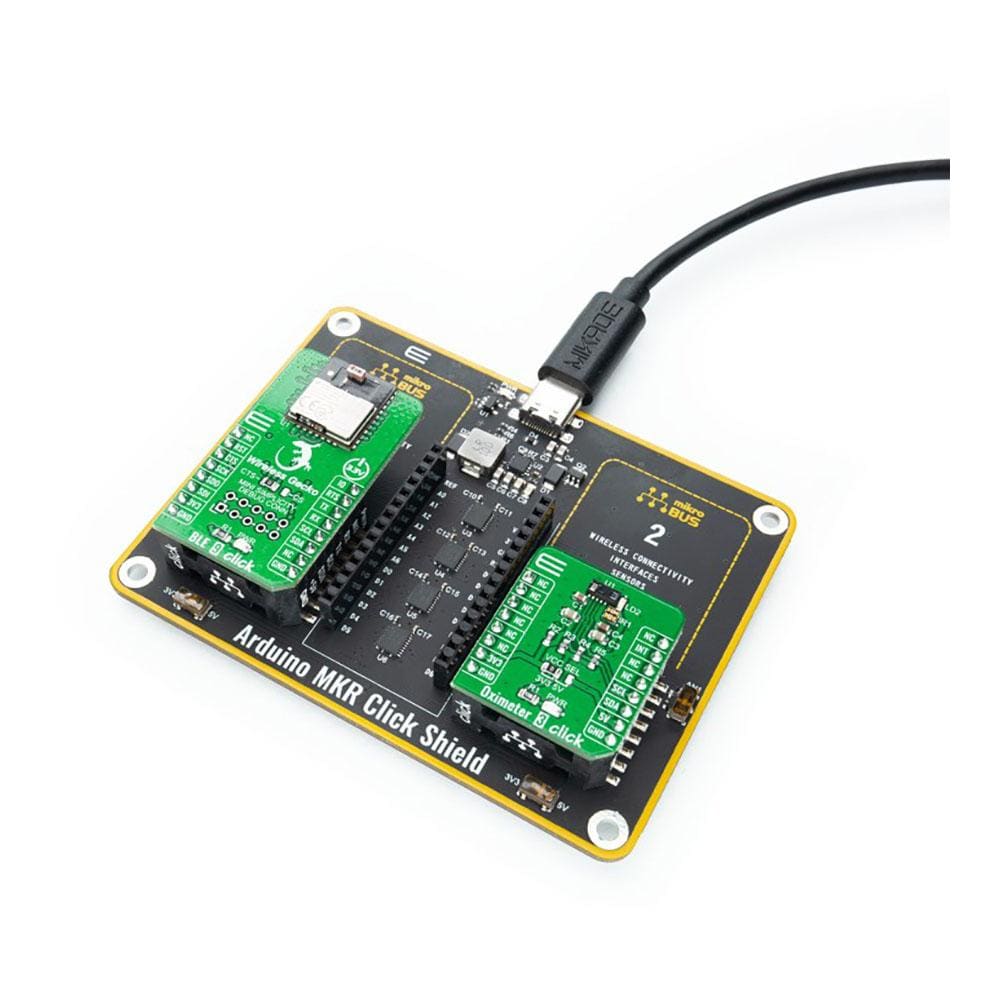



Key Features
Branchez simplement votre carte Arduino MKR sur le Shield
Equipé de deux prises Click Board™
Comprend des traducteurs de niveau de 5 V à 3,3 V
mikroBUS : interfaces I2C, SPI, UART, PWM, analogiques et GPIO
Overview
Start your project development with our Arduino MKR Click Shield fast and easy. The Arduino MKR board, in combination with the mikroBUS™ socket, provides you immediate access to hundreds of Click boards™ in our offer, allowing you to create a limitless number of applications with one host board.Downloads
Démarrez rapidement et facilement le développement de votre projet avec notre Arduino MKR Click Shield . La carte Arduino MKR, en combinaison avec le socket mikroBUS™, vous offre un accès immédiat à des centaines de cartes Click™ de notre offre, vous permettant de créer un nombre illimité d'applications avec une seule carte hôte.
| General Information | |
|---|---|
Part Number (SKU) |
MIKROE-4444
|
Manufacturer |
|
| Physical and Mechanical | |
Weight |
0.055 kg
|
| Other | |
Warranty |
|
Country of Origin |
|
HS Code Customs Tariff code
|
|
EAN |
8606027381454
|
Frequently Asked Questions
Have a Question?
Be the first to ask a question about this.




